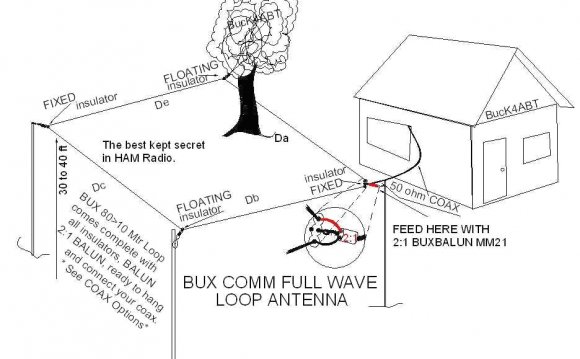
Antennas are electrical circuits designed to facilitate the transmission and/or reception of electromagnetic radiation.
Antennas are specifically designed to transmit/receive as much electromagnetic radiation as possible, whereas most circuits are designed to emit/detect as little as possible. However, even a dummy load will emit a small amount of electromagnetic energy when radio-frequency oscillations are applied to it.
Antenna Size
Optimized antennas will have dimensions of the same order as the wavelength of operation. A balanced antenna will typically be about a half-wavelength long, and an unbalanced antenna such as a vertical will typically be about a quarter-wavelength long. It is possible to shorten antennas drastically at the cost of efficiency. See antenna loading for more discussion.
Theory of Antennas
In terms of their construction, antennas are RLC circuits in which resistance, inductance and capacitance are distributed along a conductor, rather than being concentrated in a particular component such as an inductance in an inductor.
Antenna Types
Simple Antennas:
Complex Antennas:
Specialized Antennas:
Baluns
A balun is a transformer that converts a signal that is balanced with respect to ground - equal currents in opposite directions - to one that is unbalanced with respect to ground - one conductor and a ground. baluns can take a number of forms, but all types utilise electromagetic coupling in their operation. In ham radio, baluns are often used to change impedance - for example the Guanella balun can be used to converts a 300Ohm line to a 75Ohm line.
INTERESTING VIDEO












